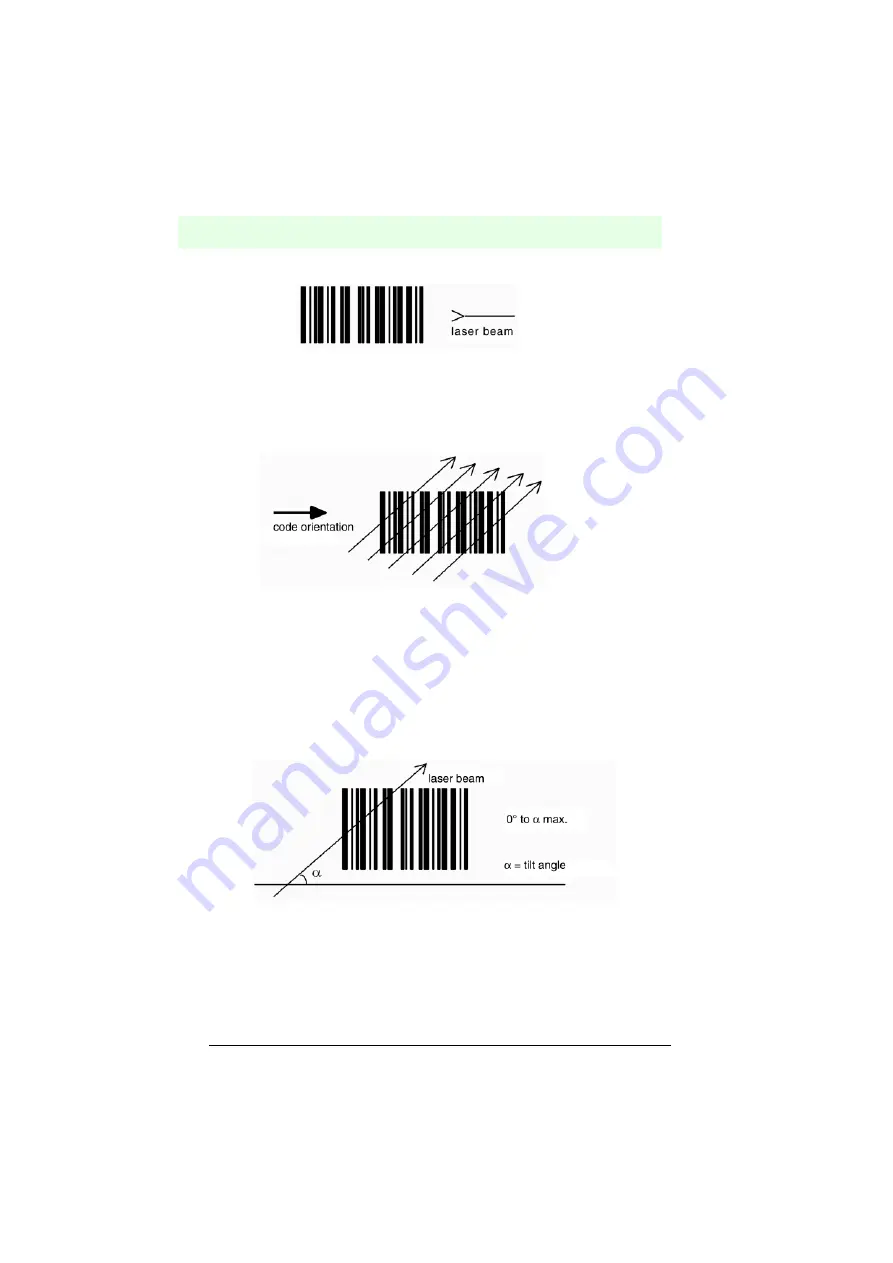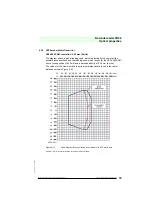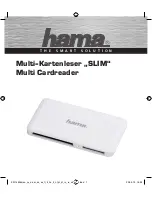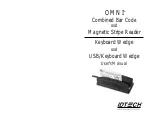
Barcode reader VB34
Optical properties
Da
te
of
issue
06/
1
3
/2005
64
Subject to reasonable modifications due to technical advances.
Copyright Fuchs, Printed in Germany
Fuchs Group • Tel.: G49 621 776-0 • USA +1 330 4253555 • Sin65 67799091 • Internet http://www.pepperl-fuchs.com
Figure 8.1
Linear reading
With the ACR technology it is no longer necessary for the laser beam to pass across
the entire barcode in one go. The VB34 is able to reconstruct the barcode from a
series of partial scans, which are possible if the label itself is moving. The following
figure shows a typical example of a series of partial scans:
Figure 8.2
Partial scans
None of the partial scans contains the complete barcode. The decoder aligns the
individual partial scans correctly to each other and combines them in the correct
sequence thereby creating the complete code.
The partial scans are aligned using the time difference between the partial scans,
which is calculated via reference elements in the code.
8.1.1
Tilt angle for the ACR reconstruction
The most important parameter in the detection with ACR technology is the maximum
tilt angle (a max), under which a code can still be reconstructed.
Figure 8.3
Rotation angle
The calculation of the maximum angle for a is affected by different parameters, such
as: height of label, number of read processes per second, code motion speed, etc. To
determine the maximum value for a in your application, get in touch with your
Fuchs contact person.
Note that the decoder can read the label under a rotation angle b
α
max
and
















































